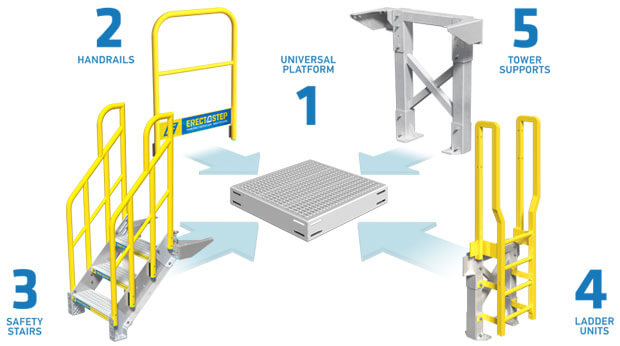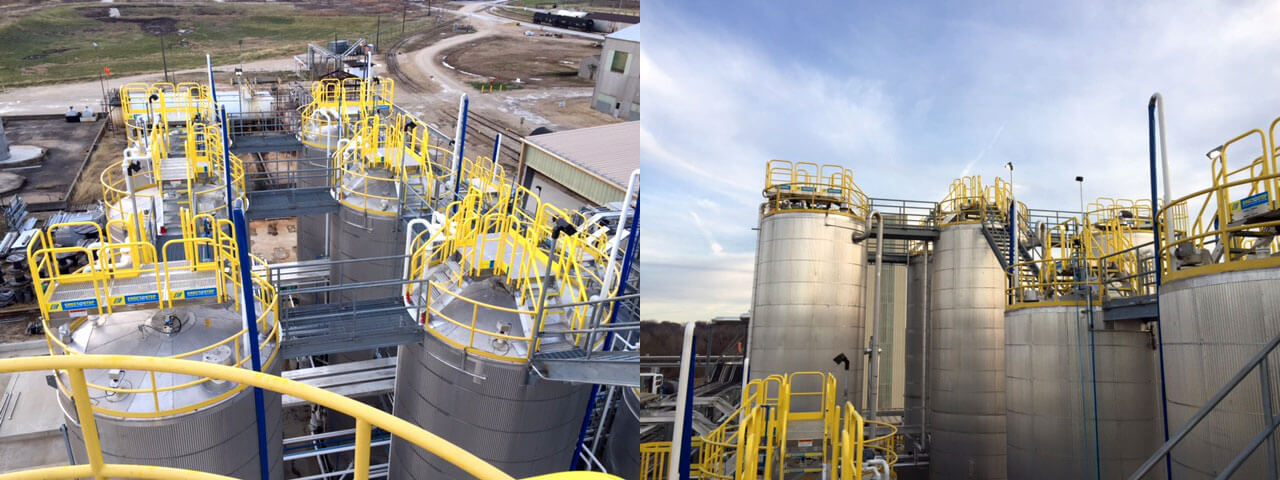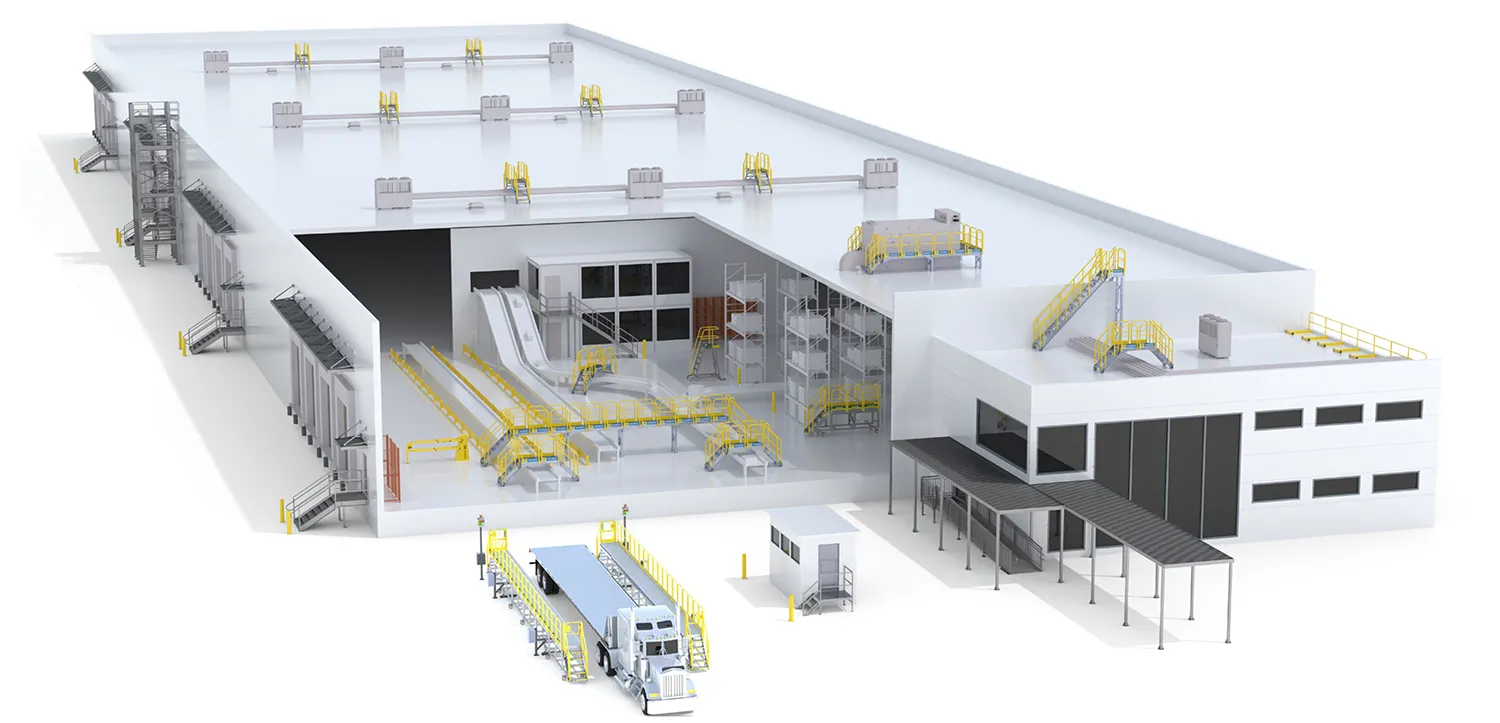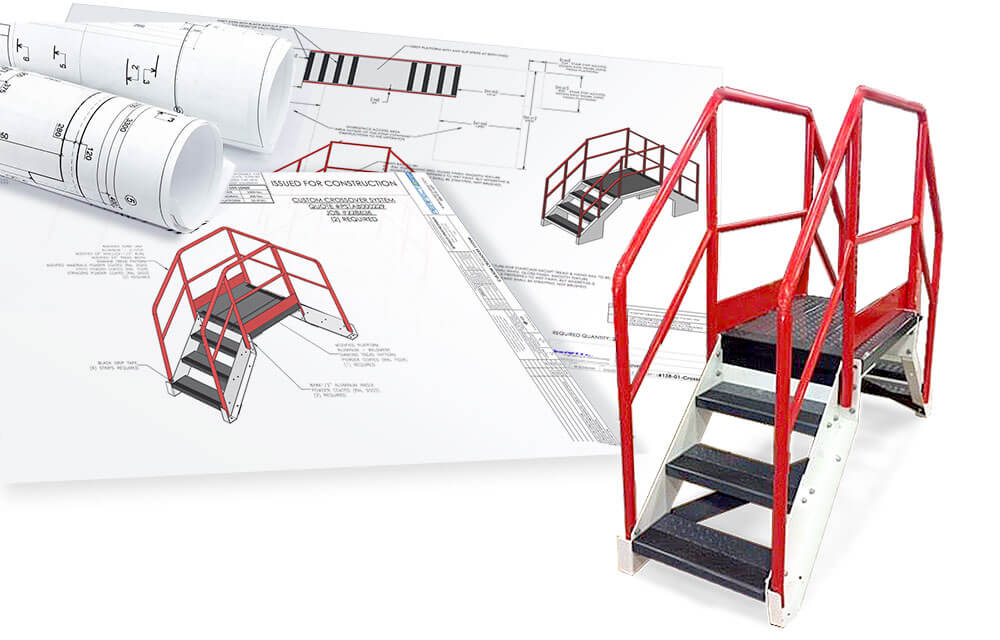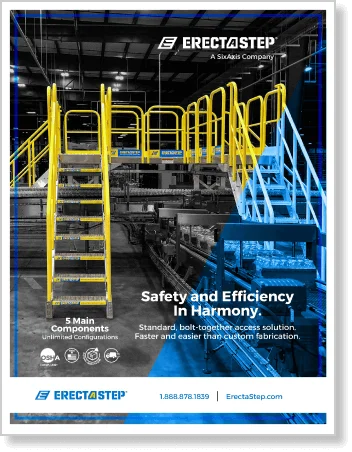October 22, 2014
How Does Industrial Safety Fit Into the Modular Plant of the Future?
Driven by an increase in engineer-to-order and mass customization, nearly half of manufacturers will turn to modular manufacturing platforms over the next five years, according to an IDC Manufacturing Insights Report. The concept modularity centralizes a standardized manufacturing platform while outsourcing the remaining processes to local suppliers.
Removing bottlenecks will be key to creating value, in this new manufacturing paradigm. Value comes from increased speed to market, lower costs, and even more agile manufacturing. Value creation cannot come at the expense of safety and vice versa. We see the need for adaptable safety solutions that support the nimble manufacturing plant of the future.
Consider the manufacturing footprint and how it continually adapts as production processes change. Whether workers require safe access to newly created parts of the plant or fall protection brought about by a changing plant footprint, safety systems should also create value.
Safety that protects and adds value
We’re not referring to minimizing costs simply by reducing incidents or risk of non-compliance. We’re referring to productivity enhancements that drive top and bottom line performance. Your safety solutions should do more than protect; they should also enable workers to perform their jobs more efficiently.
For example, a safety gate protects workers from ready access to risky work areas. However, if they make access difficult to the point that workers lose efficiency, then the gates are not adding value; they’re simply an operating cost. A safety gate can offer flexibility such as adjustable tension that gives workers protection and also hands-free access to do their jobs safely and more efficiently.
Leveraging existing assets is another way plants of the future are adding value and containing costs. This same concept applies to safety solutions, especially in modular plants where the footprint is likely to change frequently. Permanent, fabricated safety systems will become a source of waste that adds to maintenance and disposal costs—neither of which add value.
Instead, modular plants of the future will require safe access systems that are reconfigurable and pre-engineered to meet safety compliance regulations. These modular safety systems support plant sustainability efforts and reduce costs associated with maintenance and waste.
Ease of use will be another key requirement for safety systems as plants of the future focus on maintenance activities that add value instead of costs. A safety system that’s easy to assemble and reconfigure supports agility and contributes to faster speed-to-market goals without compromising worker safety or productivity.
Modular safety systems allow plant management to better allocate resources. For example, pre-engineered, modular safety components, free up more costly engineering resources to focus where they add the greatest value. At the same time, maintenance staff adds value by quickly and easily installing a safety system instead of waiting for engineering to design and verify a fabricated safety system.
The manufacturing plant of the future could become even more distributed than today’s plants. Safety must also adapt if manufacturers are to realize the value of this approach to manufacturing. Look for modular safety systems that reduce the need to allocate engineering resources. Instead, consider ease of use and reconfigurable safety systems that better leverage maintenance teams and provide greater flexibility to change as your modular plant footprint changes.
Learn more about modular fall protection and safety work platforms.
This is the third post of a three-part series. Learn more about safety and productivity in the previous two posts:
